Unlocking Hidden Profits with Stacey Hylen written by John Jantsch read more at Duct Tape Marketing
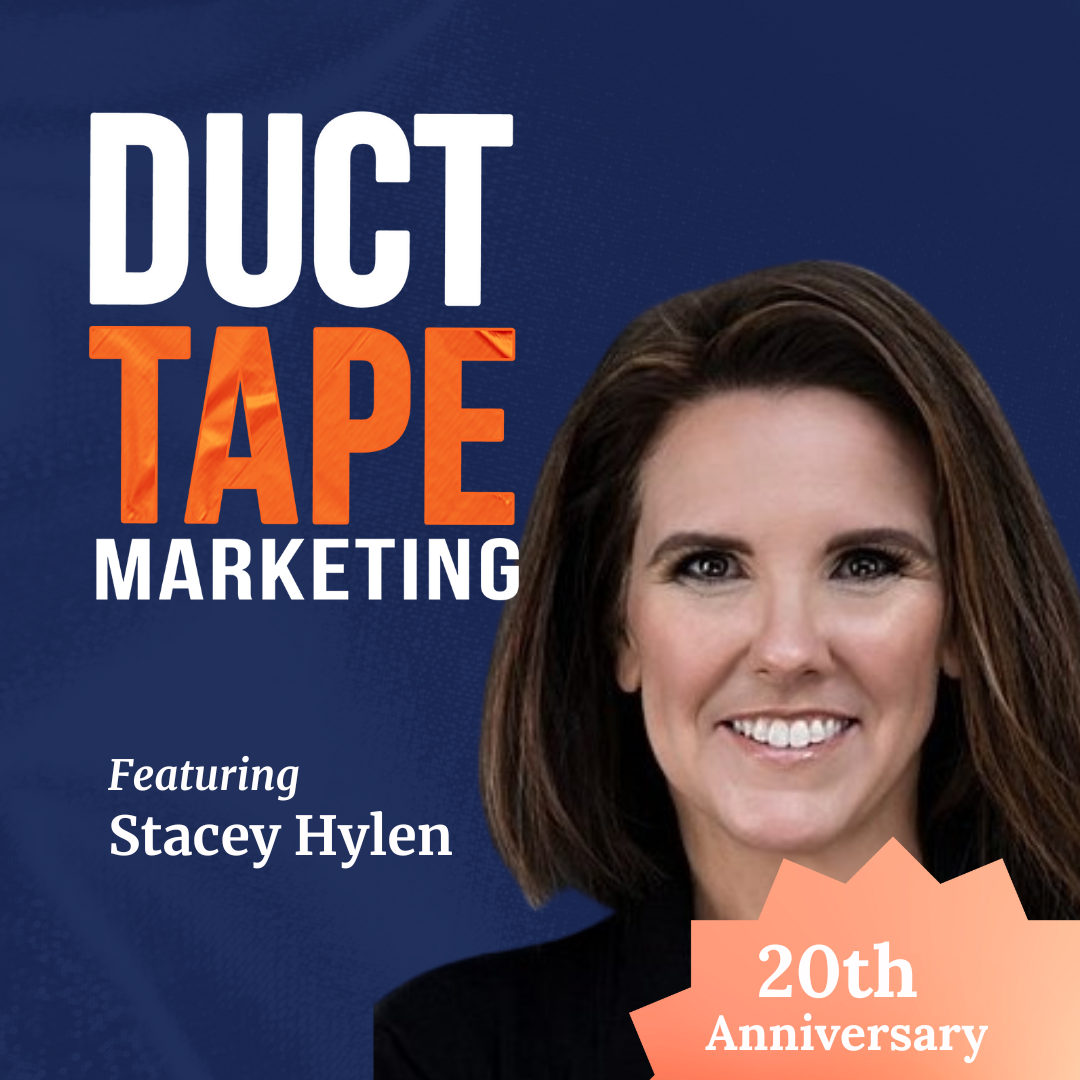 Overview
Overview
In this episode of the Duct Tape Marketing Podcast, John Jantsch interviews Stacey Hylen, internationally recognized business coach, growth strategist, and author of “Hidden Profits: More Clients and Cash.” Stacey shares actionable insights on how business owners can uncover untapped revenue, raise prices with confidence, and create long-term client relationships—often without spending a dime on new marketing. The conversation covers why mindset is key, how to reposition from commodity to couture, and why small changes (like a single upsell question) can deliver massive results.
About the Guest
Stacey Hylen is a globally recognized business coach, growth strategist, and speaker who has spent over two decades helping entrepreneurs—from solo businesses to Fortune 500s—uncover hidden profits and boost performance. As a former VP for Chet Holmes International and now the author of “Hidden Profits,” Stacey is known for her practical, empowering approach to business growth.
- Website: staceyhylen.com
- Book: hiddenprofitbook.com
Actionable Insights
- Most business owners are too close to their operations to spot hidden profit opportunities—outside perspective is powerful.
- Raising prices is often the fastest path to profit, but it requires a mindset shift toward abundance and owning your expertise.
- Attracting the right clients (and letting go of the wrong ones) leads to higher revenue, less price sensitivity, and more enjoyable work.
- “Profit leaks” are caused by focusing on low-impact tasks and avoiding essential sales and marketing actions.
- Reframing sales as service (helping, not selling) builds confidence and makes it easier to attract and close ideal clients.
- Past clients are a goldmine—reactivation and “come on back” strategies can drive immediate revenue with minimal effort.
- Upsells and cross-sells (“do you want fries with that?”) at the point of sale create easy, recurring profit boosts.
- Every team member—not just sales—can (and should) look for opportunities to help clients and add value.
- Even “commodity” businesses can reposition themselves as unique, high-value partners through better packaging, messaging, and client experience.
- Small changes can have huge impact—one new question or process can increase sales by 40% or more.
Great Moments (with Timestamps)
- 00:54 – Doubling Revenue with Hidden Profits
Stacey shares how a client reactivated past customers and tweaked pricing for dramatic growth. - 02:07 – Overcoming the Fear of Raising Prices
Why mindset and confidence are essential to charging what you’re worth. - 03:19 – The Power of Narrowing Your Focus
How strategic positioning and language attract the right (and repel the wrong) clients. - 04:58 – Spotting and Fixing “Profit Leaks”
Why low-impact busywork and avoidance hold businesses back from real growth. - 06:02 – Sales as Service, Not Selling
Why reframing the sales conversation helps business owners overcome reluctance and get referrals. - 08:46 – The “Come on Back” Strategy
How one client had their best month ever by reactivating former customers—even in December. - 10:30 – The $700,000 Mistake
The cost of not keeping in touch—and how a single call can recover massive lost revenue. - 12:53 – The Hidden Profits Framework
Stacey outlines her step-by-step process for finding revenue you already have. - 13:47 – Upsells and Cross-Sells at the Point of Sale
Simple, proven ways to increase average transaction value. - 15:52 – From Commodity to Couture
How even price-driven businesses can reposition for higher profits and loyalty. - 18:00 – Surprising Results with Small Changes
The story of a 48% sales increase from a single upsell question.
Pulled Quotes
“Most business owners are too close to see the hidden profits in their business. It’s about getting resourceful, not just adding resources.”
— Stacey Hylen
“Sales is service. If you’re great at what you do, you owe it to your clients to help them—and that means being confident about your value.”
— Stacey Hylen
John Jantsch (00:01.55)
Hello and welcome to another episode of the Duct Tape Marketing Podcast. This is John Jantsch. My guest today is Stacey Hylen. She’s an international recognized business coach, growth strategist and speaker who spent over two decades helping entrepreneurs uncover untapped revenue and performance in their business. As a former vice president for Chet Holmes International, Stacey has worked with companies ranging from solo entrepreneurs to Fortune 500s. We’re going to talk about her new book.
hidden profits, more clients and cash. So welcome to the show, Stacey.
Stacey Hylen (00:35.247)
Thanks John, I’m excited to be here.
John Jantsch (00:37.696)
So you open actually the book with a story, which is always awesome. A business owner doubled their revenue without new marketing spend. Can you break down a little bit of the hidden profit you helped them find and, and maybe also like how they couldn’t spot it themselves.
Stacey Hylen (00:54.649)
Yeah, well, the thing is, is that a lot of times when you’re a business owner, you’re stuck in the day to day doing all the time. so it’s really, really hard to see the things for yourself. So the hidden profits came about from when I worked with Tony Robbins and he said during the recession, it’s not about a lack of resources. It’s about becoming more resourceful.
And so what we looked at is, all right, what are the ways that we can increase? And we looked at the different hidden profits in his business. In this case, he was able to do a come on back strategy to reactivate a bunch of the clients that, that hadn’t been in his business for a while and increase his business that way. And then we also looked at tweaking his pricing because this is in a lot of places he was under pricing what he was doing.
John Jantsch (01:45.902)
Yeah, yeah, we could probably talk the whole show about that very thing. I find that especially with service businesses. What would and you probably encountered that a lot, right? So just telling somebody they should raise their prices. Well, it make sense. It’s pretty hard for them to sometimes stomach. How do get people around that resistance that they’re normally is?
Stacey Hylen (02:07.779)
Well, it’s funny because in the book I call that that fear factor, right? The hidden profit of raising your prices because people not being able to raise prices comes from a lack mentality as opposed to abundance mentality. It also comes from not owning your expertise. And so I think one of the big challenges that, that entrepreneurs need to do is to start to own their expertise and to own the outcome that they help create for their client. And when you.
John Jantsch (02:11.746)
Yeah, right, right.
Stacey Hylen (02:37.315)
focus on what the outcome is that you create for your client, then it’s a lot easier to say, okay, this is worth charging more for, be willing to, know, sometimes it’s baby steps that we have to do, you know, that we raise the price on one particular product or service or program, and then once they get the little bit of confidence, then we, you know, step it up again and again until we get to the right spot.
John Jantsch (03:00.226)
You know, I also find a lot of that comes from them not really being very specific about who they can help. And so they attract a lot of people that don’t get the value, don’t appreciate their expertise and, consequently are very price sensitive. Would you, would you say that’s also another, like getting people to narrow their focus as part of it too?
Stacey Hylen (03:19.331)
Yeah, it’s really important. And I think part of that comes from your language when you speak to in your marketing, you know, and really honing in that strategic positioning so that you become the expert that they want to work with. And I think, you know, I had a client here yesterday for a VIP day. And one of the things that was funny is he was saying words that he wanted, you know, to attract the clients and.
None of the words he mentioned were the words in actual prospect would be searching for or looking for in a transformation. So we had to really look at that. And then we also looked at, know, who are those clients that he didn’t want and what were the warning signs? Because I think a lot of times, again, coming from a lack perspective versus an abundance perspective, that they think, it’s a lead. have to take this client. But when you have a lot of crappy clients, it sucks your energy. It sucks your time.
And it’s not a great way to grow your business. Whereas if you have one of your perfect clients that is fun to work with, is willing to invest, like that’s a great way to grow your business.
John Jantsch (04:15.278)
Yeah.
John Jantsch (04:23.244)
Yeah, it’s funny, you know, you’re in this game very long at all. You know, you can almost, I can almost talk to a client. The first thing they ask me, you know, well, if we go, you’re going to be a good client or not. You know, you get really good at sort of recognizing that perfect client behavior, don’t you?
Stacey Hylen (04:39.149)
Yeah. And also it’s, it’s, it’s willing to be pay attention to your gut when you hear that, but you’re like, Ooh, that’s not going to be a good one. And, being willing to just release them and let them go into the wild.
John Jantsch (04:44.118)
Yeah, yeah, yeah, yeah, yeah,
John Jantsch (04:52.022)
You identify something as being a problem that you call profit leaks. You want to talk a little bit about what those are?
Stacey Hylen (04:58.991)
Yeah. So one of the things with the profit leaks is that people are focusing on the wrong thing in their business. They’re focusing on the minutia in their business that is not helping them create revenue. Right. And so this could be endlessly tweaking your website. could be, you know, anything that is like so much easier to do than actually do some marketing, go out there, talk to prospects, get in front of, you know, places where your perfect clients are.
John Jantsch (05:13.417)
Right
John Jantsch (05:20.204)
Mm-hmm.
Stacey Hylen (05:26.883)
So I’m sure you see that in all of your work that people just like hide out. And that’s really where a lot of those revenue leaks come because they’re not taking the action that they need to take.
John Jantsch (05:36.682)
Well, I can go a lot of directions with that. But I think that that’s a real issue. A lot of businesses, mean, a of people know how to do something. They got into a business to do it, but they didn’t really get into business to go out there and sell to, you know, actually have conversations with people or convince people as they maybe feel like it is. So how do you get people past that? Because I mean, the whole profit conversation kind of breaks down if I can’t go out there and get clients.
Stacey Hylen (06:02.691)
The thing is, that I really help my clients shift from seeing sales as selling to helping them see it as serving. And the reason why is if, if I was to ask you, what’s your favorite restaurant, you would, what’s your favorite restaurant, John? It’s easy to say, right?
John Jantsch (06:18.35)
All right, it’s Trace Greengroce in case you’re listening in Nederland, Colorado. Okay, go ahead.
Stacey Hylen (06:24.565)
Awesome. Awesome. And so you’d like, that’s easy because you think, my gosh, I’m going to help Stacey find a great place to eat while she’s in Colorado. But the thing is, is your prospects are also having problems and challenges. And if you are really good at what you do and you’re an expert at it, then you should be willing to share what you do because you’re helping solve a problem for somebody and you’re actually serving them. So I think that’s really the first step to shift into that.
that confidence and that’s where having a coach really helps is because sometimes they have, my clients have to borrow my confidence, both in selling, marketing, and also raising their prices, right? Because those are all confidence issues.
John Jantsch (06:51.02)
Yeah.
John Jantsch (06:56.056)
Yeah, yeah.
John Jantsch (07:02.604)
Yeah. And I would extend that to referrals too, because a lot of people, even if they have a good customer, they’re like, I’m reluctant to ask, you know, for referrals, but it’s the same thing. It’s like, if, if you’re getting like this amazing result, wouldn’t you your friend to get that? So it’s kind of the same mentality, isn’t it? So I should have asked this at the very beginning of the show. But we ought to set, we ought to talk a little bit about people’s relationship with the word profit to begin with. You know, a lot of business owners,
don’t really think about profit or heaven forbid some actually look at it as a negative thing. And so consequently, and you probably know Mike McCallewitz, my friend that’s been on the show a number of times, wrote Profit First. And you you said that a lot of business owners, all they really want to do is pay the bills and pay themselves a salary and, you know, amounts to being a job rather than building an asset. So do you find that you sometimes have to actually set the
Stacey Hylen (07:44.143)
Mm-hmm.
John Jantsch (07:59.532)
baseline for what profit is and why it’s a good thing?
Stacey Hylen (08:03.279)
Sometimes, it depends on the client, right? But I think a lot of times what happens is, you know, the hidden profits are really revenue boosters that go direct line to bottom line profit. And that’s the difference in this book. Right, because that’s why this book has hidden profits, because there are things that…
John Jantsch (08:04.737)
Okay.
John Jantsch (08:08.088)
Yeah, yeah.
John Jantsch (08:16.108)
Yeah. Yeah. Raise your prices without raising your costs. Right.
Stacey Hylen (08:23.691)
boost your revenue, but because it doesn’t increase your cost, you’re not doing more marketing or more expense with the strategies in the book. It all goes to the bottom line profit. So it makes it much easier to boost your profit.
John Jantsch (08:26.958)
Yeah.
John Jantsch (08:36.398)
So if you were gonna walk into a business, and I know every business is different, but have you found there are a couple things that are like, that’s the low hanging fruit. Like here’s the first thing we’re gonna do.
Stacey Hylen (08:46.051)
Yeah, absolutely. So the first thing is, know, what do you have for past clients that are currently not doing business with you? Because those people love you, they trust you, and for the most part, you know, you were saying people are shy to do it or hesitant to do it. People are, other than dentists, are hesitant to get people to come back, right? And so.
John Jantsch (09:10.156)
Yeah,
Stacey Hylen (09:11.247)
We want to do a come on back strategy. And I had a client that I talk about in the book that she was taking one of my live hidden profit programs and it was the slowest month of the year for her. It was December. She was selling weight loss. Nobody wants to lose weight in December. It’s like time to eat your grandma’s cookies, right? So we did, she, she was an action taker and she said, I’m going to do it even though it’s December. And I was like, well, this might not be the best month for this hidden profit, but go for it.
John Jantsch (09:26.486)
Right,
Stacey Hylen (09:39.809)
She increased her sales by over 50 % in one month. She had her best month ever in her business by doing that reactivation strategy. And it’s because she actually went back to them, gave them permission to come back. And sometimes that’s the shyness there is like, you think the client is shy to come back to you because they might’ve gone off and tried another weight loss product or tried somebody else to fix their car or cut their hair or whatever it is. And you’re saying like, Hey, I’d love to have you back.
John Jantsch (09:53.816)
Yeah.
John Jantsch (10:01.932)
Yeah, yeah, yeah.
Stacey Hylen (10:09.017)
come on back and that works almost every single time to really boost profits very quickly.
John Jantsch (10:15.148)
You know, it’s really interesting too, because I think most businesses feel like, they left because they weren’t getting what they wanted here or, but people leave for tons of reasons. Right. And so I think for us to assume that it was all about us is probably what holds a lot of people back.
Stacey Hylen (10:30.625)
Yeah, this one, this one is going to be a rider downer for your listeners and watchers. I have a client, we call this the $700,000 mistake. And he was coming to his coaching call and he canceled last minute. And I said, what happened? And he said, well, I had a hundred thousand dollars sale. No, normally a hundred thousand dollars sale. I would be like, let’s do our happy dance. And he said, no, Stacy, this was not a happy dance moment. And I said, well, how can a hundred thousand dollars sale not be a happy dance moment? And he said, this client.
John Jantsch (10:34.904)
Okay, let’s hear it.
John Jantsch (10:51.084)
Right, right.
Stacey Hylen (11:00.111)
was a past client that for the last seven years has been going to my competitor. And because he had not said, come on back, he lost $700,000 in sales. So I want your listeners to be thinking about that. Like really, there’s some hidden profit right there that if you just go back and talk to these past clients, you can be welcoming them back into your business very easily.
John Jantsch (11:26.412)
Well, I think he should have done the happy dance anyway, you know, take what you can get. Okay. He learned a lesson, but take what you can get.
Stacey Hylen (11:33.769)
He learned a very expensive lesson.
John Jantsch (11:38.424)
So in some cases, people left because something was too expensive, their business had changed or something. mean, so how often do you find that the hidden profits might be in saying, hey, we need to relook at all of our products or all of our offerings and repackage or repositioning. How much of creating new profit is sort of reinvigorating what you’ve already put out
Stacey Hylen (12:01.711)
Yeah, well, when I, I have a mastermind and we have retreats twice a year and that’s really like, I would say like six months because we do the retreats every six months. It kind of gives us a time to like deep dive into the business and look at, okay, what’s working, what’s changed because you’re, you know, the markets change, the economy changes. AI has brought in a lot of stuff, right? Like I, recently become a certified AI consultant. like you can look at like.
John Jantsch (12:22.892)
Right. Right.
Stacey Hylen (12:29.817)
How can you refresh your offers to meet what your clients actually want right now? How can you package them differently? How can you drive them to those offers in a way that gets more clients quickly?
John Jantsch (12:45.048)
So you do talk about the hidden profits framework in the book. Is there a way for you to give the high level, here’s the step-by-step process?
Stacey Hylen (12:53.581)
Yeah, so what we’re looking at is we’re looking at where you’re not getting the revenue coming in the door. So we talked about the reactivation, the come on back. So that’s lost clients that have already worked with you. Another great spot to look at that’s a very quick win for most people is do you want fries with that? Right? The upsell. Now, when we were kids, we went to McDonald’s and they said, do you want fries with that? And our parents were like, okay.
And now they sell the happy meal, you know, the combo meal that has everything together with it. And they say, do you want to biggie size it or do you want to supersize it? And so a lot of times people are leaving money on the table right there when people have their wallets out. So when people have their wallets out in your business, that’s an opportunity for you to say, okay, you’re signing up for this. Would you like this? The VIP level support? Would you like this?
John Jantsch (13:37.646)
Mm-hmm.
Stacey Hylen (13:47.407)
additional thing that will help them solve their problem, help them reach their goal faster. So those are two hidden profit points that are really quick to add into your business without any additional time, money, or, you know, team members to implement them.
John Jantsch (14:03.31)
Let’s say you do have a team. I work with a lot of folks that have, you know, even salespeople in organizations, which, you know, their job is to sell more stuff, right? But what you’re talking about, the reactivating customers, looking for ways to sell more to, you know, even account managers, say in marketing firms. I isn’t that something that really ought to be, or a business ought to look at that as being everybody’s job, is to start adding those things?
Stacey Hylen (14:27.725)
Yeah, absolutely. Absolutely. Like I have a long time client. He’s been my client for over 15 years. And so what we look at every year is, okay, who are your best clients? What additional products, services, what additional things can help them solve their problems and help their clients reach their goals faster. And then his team, he has salespeople and he has operations people, they are trained to look for.
across opportunities also in that account. Like what else does this client need? What other divisions does this company have that could use our services? Who else could we meet in this company that could connect us to somebody else in the company that also needs our products or services? So absolutely, that’s something that should be constantly looked at and also rewarded, right? In terms of not just a sales team, but if you have an operations team that’s dealing with the client on a regular basis, they’re a really good person to.
John Jantsch (15:16.492)
Yeah, yeah, yeah.
Stacey Hylen (15:24.089)
hear about the pain, to hear about the goals within the company, how they’ve changed since the person’s talked to the salesperson and bring in some additional revenue through that avenue as well.
John Jantsch (15:31.116)
Yes.
John Jantsch (15:35.852)
What about companies that feel like, and I run across them all the time, at least people have this mentality. It’s like, I’m in this commodity industry. It’s all about price. You know, there’s, there’s really nothing more we can squeeze out of this. Have you been able to help companies like that, or at least that have that mentality think differently?
Stacey Hylen (15:52.259)
That is absolutely, that is one of my favorite things to do is to help clients go from commodity to Couture. And what that means is, you know, if you are competing on price, right? I had a client in the logistics industry, they are competing on price every single day and they’re competing against a hundred million dollar, billion dollar companies that are, you know, they have hundreds of salespeople smiling and dialing all day long, sending cold emails, all of that.
John Jantsch (15:56.002)
Yeah.
John Jantsch (16:13.826)
Right.
Stacey Hylen (16:22.325)
And my client was a boutique company. He’s gone from six to eight figures since we’ve been working together because we positioned him as this couture brand of helping him solve a problem for his client and get a better result, not saying, Hey, can we quote you on, on shipping? Can we quote you? And so what we’ve done is we’ve positioned him as how can we help you increase the client satisfaction on the back end?
John Jantsch (16:32.557)
Mm-hmm.
Stacey Hylen (16:48.267)
of the transaction once you make a sale in your company. So logistics becomes a value add versus a cost in the business. that also, when you position yourself in that future manner, it also helps the person making that buying decision be more confident changing providers because they’re going towards something, not just like making a minute improvement in something or just cutting costs, which often means you’re getting less service, less quality.
John Jantsch (17:08.172)
Yeah, right.
John Jantsch (17:17.398)
Yeah. Well, and they also aren’t going to leave you for the next person that’s five cents cheaper, right? Because it’s like, no way. Have you had any results that that that you’ve gotten for somebody that even surprised you?
Stacey Hylen (17:22.723)
Right, absolutely, absolutely.
Stacey Hylen (17:30.847)
gosh. Well, I would say that person doing the weight loss in December was a huge one. the other one, I had a client who had an auto parts store who is, you know, had all employees that were elderly and he was complaining about them when he did his intake form and is saying like, this wasn’t working, that wasn’t working. And it was really all about team. And I said, my gosh, how am going to help him if none of his team will do anything he said?
John Jantsch (17:35.822)
Yeah.
John Jantsch (17:55.555)
Mm-hmm.
Stacey Hylen (18:00.271)
So I said, we’re probably gonna have to clean house. And when we got on the call, he said, well, I’m not willing to let anybody go there. We live in this small town. They’re not gonna get any other employment. They’re family members, church members. So what we did is we did a one question upsell. That was it. And that increased his sales 48 % in one month. And it was just, he was blown away. I was blown away because he had such a hard, you know,
John Jantsch (18:09.347)
Hehehe.
Stacey Hylen (18:29.039)
hill to climb with his employees to actually do something? Just one question at a 48 % increase.
John Jantsch (18:35.278)
You and that’s a great lesson too, because sometimes we try to do all these things, right? At one time, and it just kind of overwhelms everybody. Just having that one thing was easy for people to do. And then they probably, when they started seeing success, they probably got a little jazzed in.
Stacey Hylen (18:50.711)
Yeah, yeah, because it’s when you get a yes and people are happy, then you want to have more of that. Right. And also the employees had the employer being really happy too, which created goodwill and helped the company culture as well.
John Jantsch (18:53.419)
you
John Jantsch (19:05.774)
Well, Stacey, I appreciate you taking a moment to drop by the Duct Tape Marketing Podcast. Where would you invite people to connect with you, find out more about your work, and obviously pick up a copy of Hidden Profits?
Stacey Hylen (19:14.807)
Yeah, thanks for asking. This has been great. I can be found at staceyhyland.com and I’m Stacey Hyland everywhere on the internet. And then if you want to get on the early bird list for the book, you go to hiddenprofitbook.com and we’re going to have a bunch of resources there. I have some AI stuff that’s kind of behind the scenes that I’ve, you know, plugged in with the hidden profits. So that’s going to be great. So go to hiddenprofitbook.com to get that as well.
John Jantsch (19:42.24)
Awesome. Well, again, I appreciate you dropping by and hopefully we’ll run into you on these days out there on the road.
Stacey Hylen (19:46.932)
Thanks John, have a great day.
Sign up to receive email updates
Enter your name and email address below and I’ll send you periodic updates about the podcast.
 Overview
Overview Overview
Overview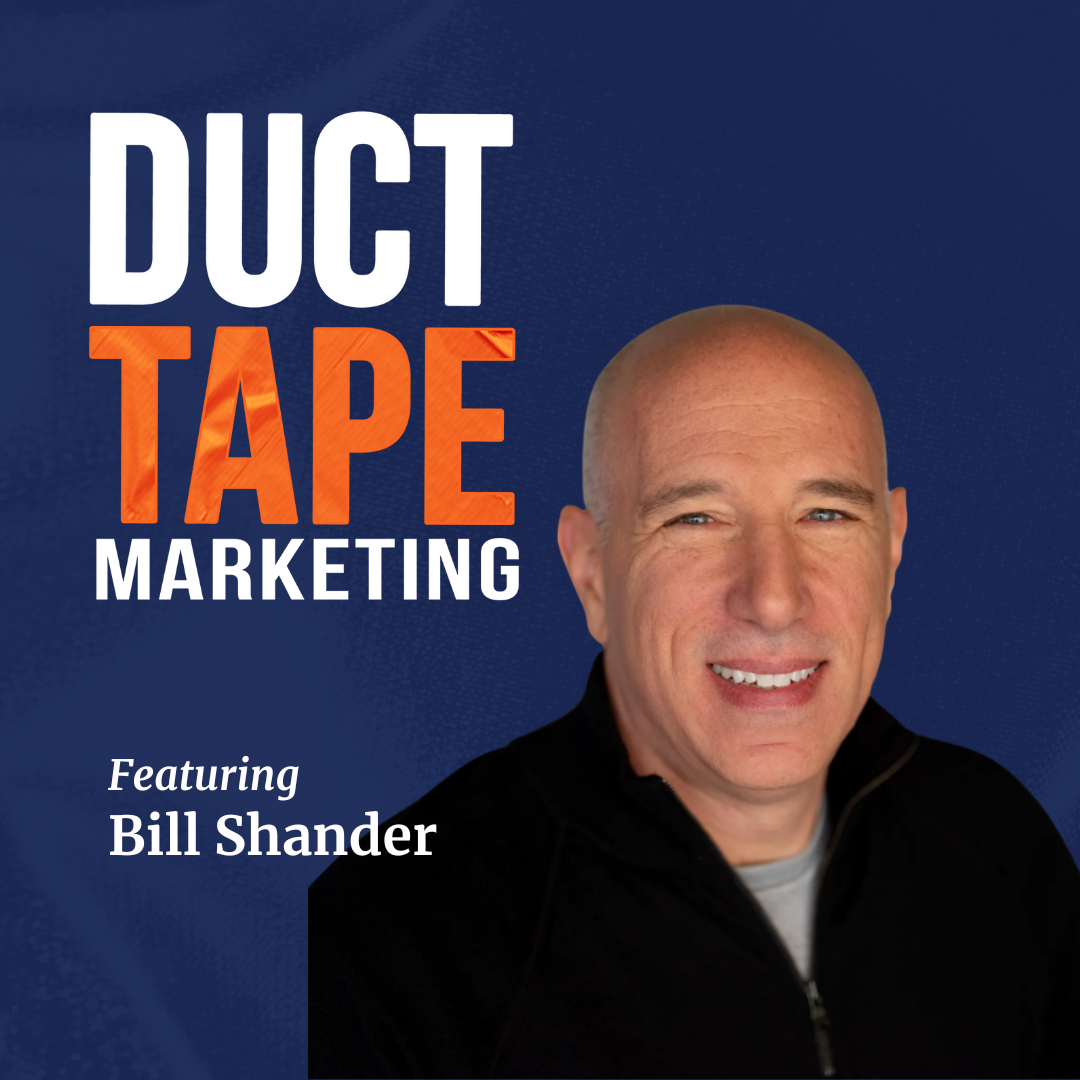 Overview
Overview Overview
Overview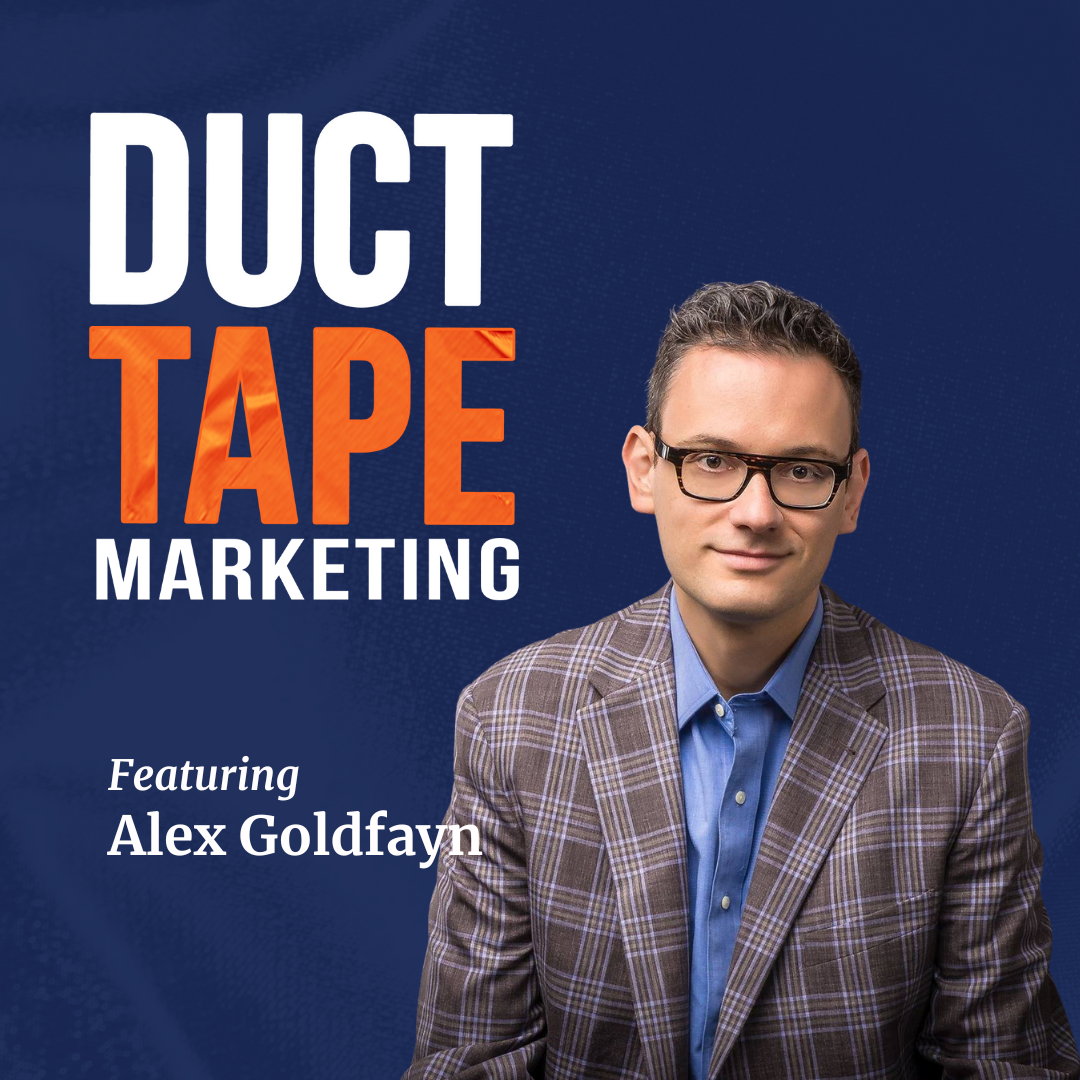
 Overview
Overview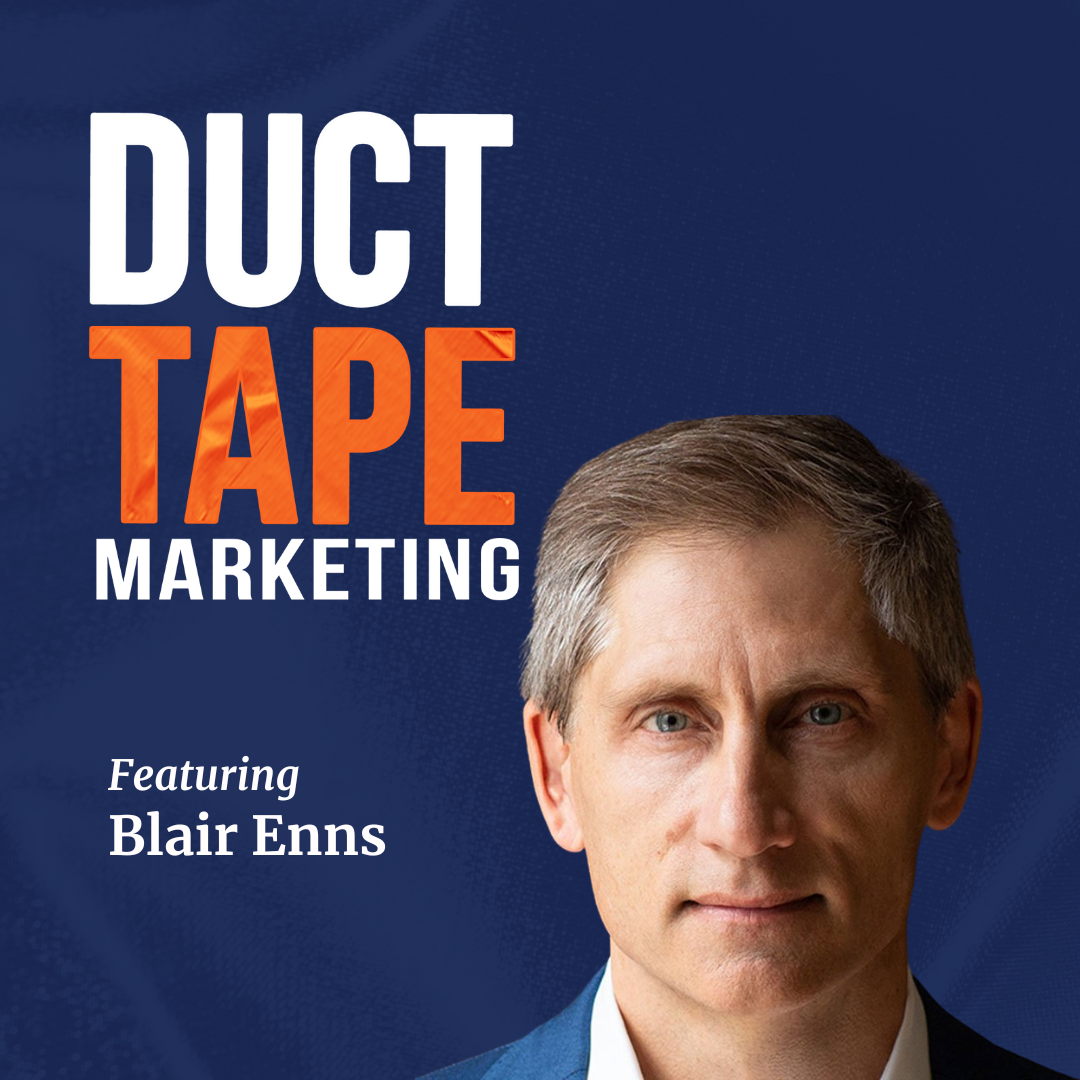 Overview
Overview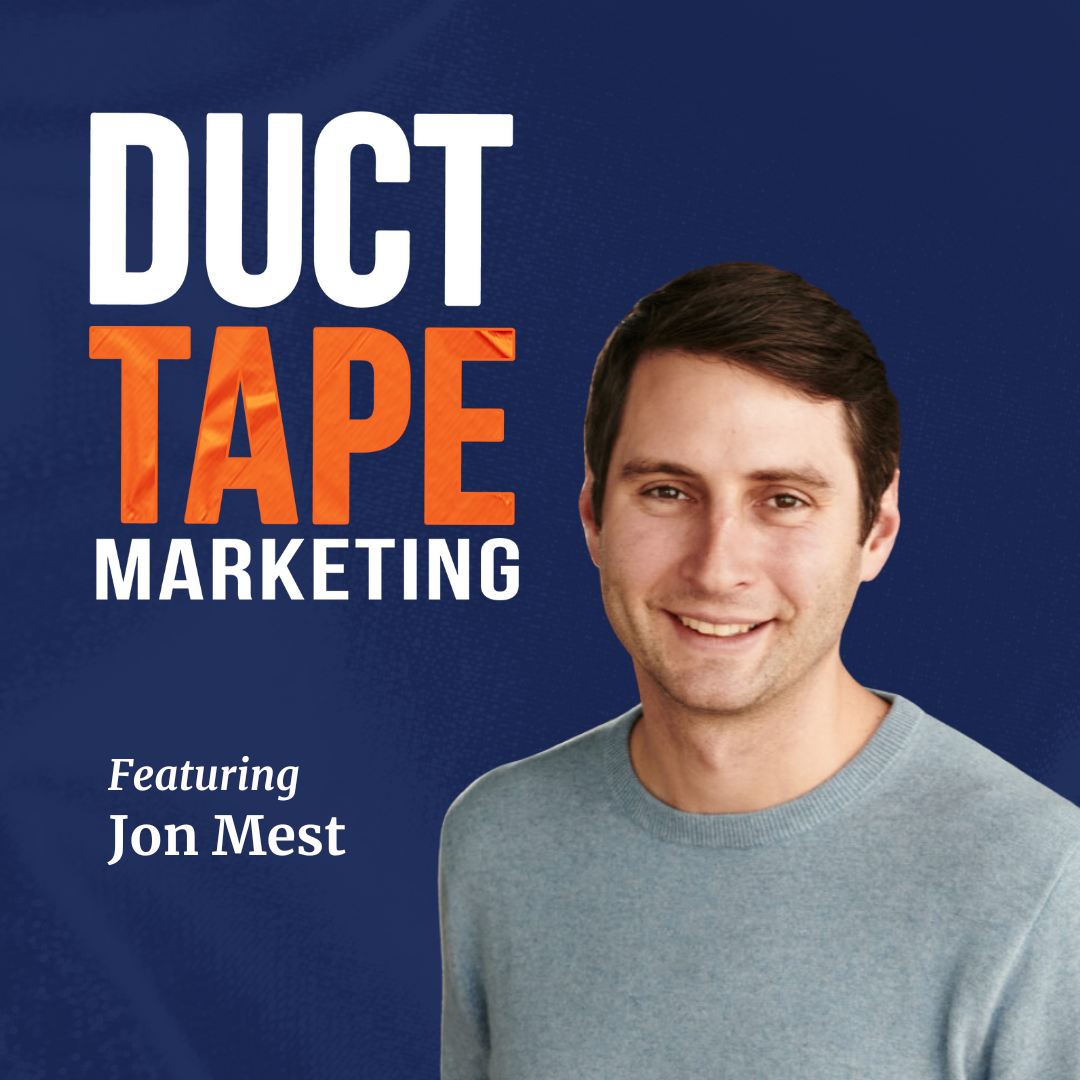 Overview
Overview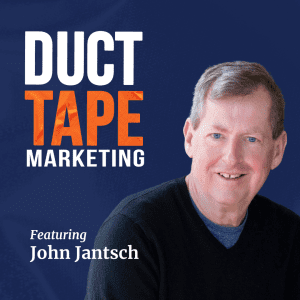 Episode Summary
Episode Summary